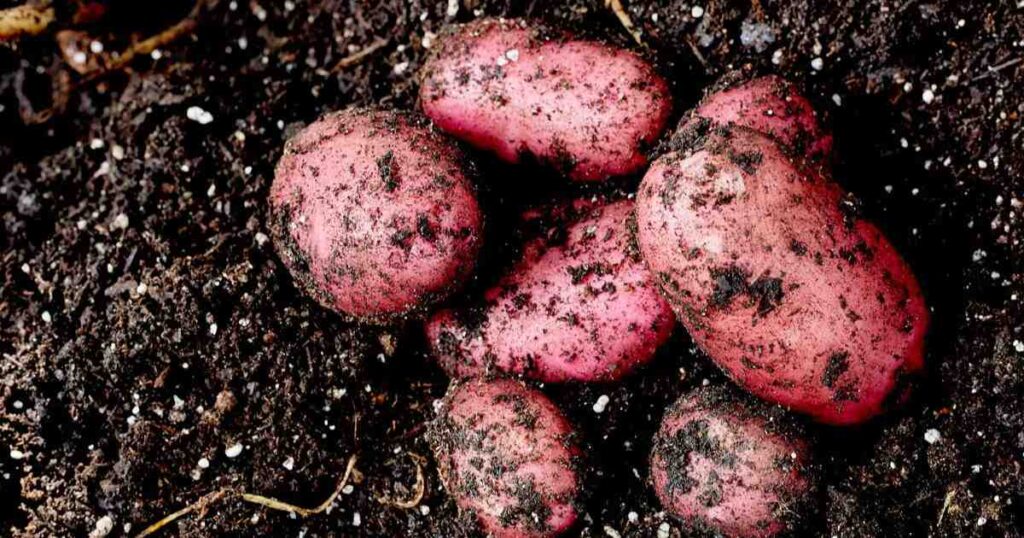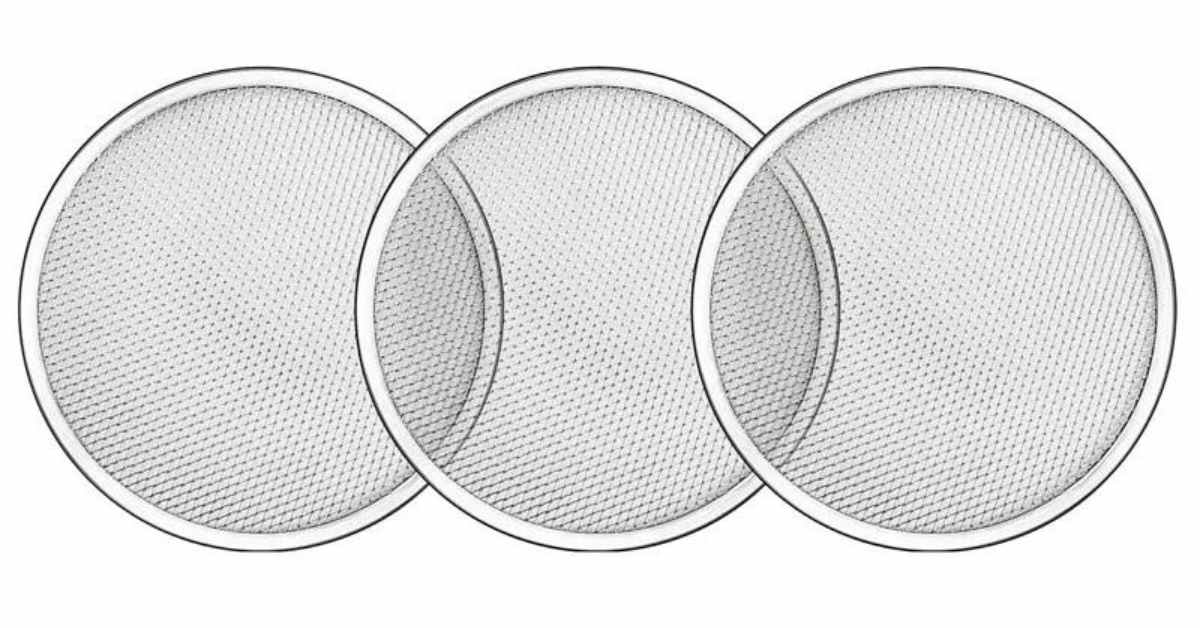Most people are familiar with the common white or yellow varieties of potatoes. However, a type of potato is also known for its distinctive red colour – the red potato. But have you ever wondered if red potatoes are naturally Red or if they are dyed or genetically modified to achieve their bright hue?
In this article, we will explore are red potatoes naturally red and how they get their red colour, and whether or not they are a healthy option for your diet. We will also discuss some interesting facts about red potatoes you may have yet to learn.
So, if you’re curious about the truth behind red potatoes and want to learn more about this colourful vegetable, read on!
Table of Contents
ToggleWhat Makes Red Potatoes Red

Red potatoes get their distinctive colour from pigments called anthocyanins. Anthocyanins are water-soluble pigments belonging to a class of molecules called flavonoids, found in many fruits and vegetables. The specific anthocyanins responsible for the red colour in potatoes are called pelargonidin glycosides.
Compared to other potato varieties, red potatoes have higher levels of these anthocyanins, which give them their vibrant hue. However, the pigments are not limited to just the potato’s skin – they can also be found in the flesh, albeit in lower concentrations.
Anthocyanins are produced in response to certain environmental conditions, such as exposure to ultraviolet light or temperature changes. These pigments act as natural sunscreens, protecting the plant from harmful UV radiation. In the case of potatoes, the anthocyanins may also serve as a defence mechanism against pests and diseases.
So, the next time you see a red potato, remember that its colour does not result from artificial colouring or genetic modification – thanks to the natural production of anthocyanins.
The Nutritional Value of Red Potatoes
Red potatoes are not only visually appealing, but they are also packed with nutrients that are essential for good health. Here is a table that compares the nutritional content of red potatoes with other potato varieties:
| Nutrient | Red Potatoes | White Potatoes | Sweet Potatoes |
| Calories | 100 | 130 | 114 |
| Carbohydrates | 23 g | 30 g | 27 g |
| Protein | 2 g | 3 g | 2 g |
| Fiber | 2 g | 2 g | 4 g |
| Vitamin C | 30% DV | 28% DV | 37% DV |
| Vitamin B6 | 20% DV | 15% DV | 15% DV |
| Potassium | 620 mg | 620 mg | 450 mg |
As you can see, red potatoes have a lower calorie content and higher levels of vitamin C and vitamin B6 compared to other potato varieties. They are also a good source of potassium, which is important for maintaining healthy blood pressure and heart function.
In addition to their nutritional value, red potatoes also offer several health benefits. The fiber in potatoes can help regulate digestion and prevent constipation, while the antioxidants in the anthocyanins may have anti-inflammatory and anti-cancer properties.
Furthermore, studies have shown that consuming potatoes (including red potatoes) may help lower blood pressure and reduce the risk of heart disease.
The Cultivation of Red Potatoes
Red potatoes are grown worldwide, and their cultivation requires careful attention to several factors. Here’s an overview of the growing process:
Red potatoes are typically planted in the spring once the soil has thawed and the risk of frost has passed. They are usually grown from seed potatoes, which are small, whole potatoes or pieces of larger potatoes that have been allowed to sprout. The seed potatoes are planted in furrows or hills in the soil, with a spacing of a worldwide-tween plant.
Throughout the growing season, red potatoes require consistent watering and fertilization. They also need to be regularly hilled, which involves adding soil to the base of the plants to encourage the formation of new tubers. Depending on the variety and growing conditions, red potatoes typically take between 70 and 90 days to mature.
Several factors can affect the growth and yield of red potatoes, including soil quality, temperature, and pest and disease pressure. For example, red potatoes grow best in loose, well-drained soil with a pH between 5.0 and 6.5. They also require temperatures between 60 and 70 degrees Fahrenheit to sprout and grow and are susceptible to damage from pests such as Colorado potato beetles and diseases such as late blight.
Red potatoes are grown in many regions worldwide, including North and South America, Europe, and Asia. Some top-producing countries include the United States, Canada, China, and Germany. In the United States, red potatoes are particularly popular in regions such as Maine, where they are a major agricultural crop.
You can also read the following: Why Your Cutting Board Smells Like Onion (and How to Fix It)
Red Potatoes vs Other Potato Varieties
While red potatoes are popular, many other types are also available. Here’s a comparison of red potatoes with russet Yukon gold potatoes:
| Red Potatoes | Russet Potatoes | Yukon Gold Potatoes | |
| Nutritional Content | High in fibre, vitamin C, and potassium | High in starch, low in vitamins and minerals | High in vitamin C and potassium, lower in fiber |
| Culinary Uses | versatile and can be roasted, mashed, boiled, grilled, and used in salads, casseroles, and stews | Suitable for mashing, roasting, and frying; skins can be left on for added texture | Suitable for roasting, boiling, and frying; skins can be left on for added texture |
| Growing Requirements | Prefer loose, well-drained soil with pH between 5.0 and 6.5; consistent watering and fertilization are required. | Prefer loose, well-heavier soil with pH between 5.5 and 6.5; consistent watering and fertilization are required. | Prefer loose, well-wider range of soil with pH between 5.8 and 6.5; consistent watering and fertilization are required. |
As you can see, red potatoes are higher in fiber, vitamin C, and potassium than russet potatoes, which are higher in starch but lower in vitamins and minerals. Yukon gold potatoes are also high in vitamin C and potassium but lower in fiber.
Regarding culinary uses, red potatoes are suitable for roasting, boiling, and frying, and their skins can be left on for added texture. Russet potatoes are best for baking, mashing, and frying, while Yukon gold potatoes are good for mashing, roasting, and frying.
As for growing requirements, red potatoes prefer loose, well-drained soil with a pH between 5.0 and 6.5, while russet potatoes can tolerate heavier soils between 5.5 and 6.5. Yukon gold potatoes can tolerate a wider range of soils between 5.8 and 6.5.
Red Potatoes and Your Health
Here are some health benefits of consuming red potatoes:
Rich in antioxidants: The red colour of these potatoes comes from anthocyanins, which are potent antioxidants that can help protect your cells from damage caused by free radicals.
Good for your heart: Red potatoes are high in potassium, which can help lower blood pressure and reduce the risk of heart disease.
Boosts immune system: Red potatoes are also high in vitamin C, which can help boost your immune system and protect against infections.
Good for digestion: Red potatoes are a good source of dietary fiber, which can help promote healthy digestion.
Red potatoes are often considered a superfood due to their high nutritional content. When compared to other superfoods, such as blueberries and spinach, red potatoes hold their own in terms of antioxidant content.
Red Potatoes and the Food Industry

Red potatoes are commonly used in the food industry, particularly in processed foods such as potato chips and French fries. While these products can be tasty, they often contain additives and preservatives that may not be healthy for regular consumption.
One concern about processed red potato products is the high amounts of unhealthy oils and salt. These additives can increase the calorie count and sodium levels, leading to health problems such as high blood pressure and obesity.
However, there are alternatives to processed red potato products. Instead of buying pre-packaged chips or fries, make your own at home using fresh red potatoes and healthier cooking methods such as baking or air-frying.
You can also incorporate red potatoes into other healthy dishes, such as salads or roasted vegetable medleys. By choosing whole, fresh foods over processed products, you can enjoy the nutritional benefits of red potatoes without the added unhealthy additives.
You can also read the following: The Dimensions of a Brisket and How to Choose the Perfect Cut
Red Potatoes and Agriculture
Beginning in the first decade of the nineteenth century, red potatoes have a long history in agriculture. They were first cultivated in South America’s Andes Mountains and imported to the US in the early 1800s. Since then, red potatoes have become a significant crop in contemporary agriculture, with extensive commercial production worldwide.
Red potatoes are favoured for their distinct flavour and culinary applications and are frequently used in organic and sustainable farming methods. Since heirloom red potatoes are frequently more hearty and flavorful than contemporary hybrids, there has been an interest in keeping them alive in recent years.
Efforts are underway to collect and preserve these varieties in seed banks and other conservation projects to ensure they are not lost to future generations.
Overall, red potatoes are a desirable crop in agriculture due to their nutritional content, variety in the kitchen, cultural relevance, and historical value. Red potatoes are an essential commodity to keep on hand, whether you’re a farmer, a chef, or just a food enthusiast.
Conclusion
Red potatoes are a popular and versatile ingredient that is naturally red. This article explores various aspects of red potatoes, including their cultivation, nutritional value, culinary uses, and place in modern agriculture. It also discusses concerns about processed red potato products and efforts to preserve heirloom varieties.
When incorporating red potatoes into your diet, choosing fresh, whole potatoes and preparing them using healthy cooking methods is essential. There are many delicious ways to enjoy red potatoes’ unique flavour and texture, whether roasting, boiling, or mashing them.
FAQs
Are red potatoes healthier than other potato varieties?
While all potatoes have some nutritional value, red potatoes are higher in certain nutrients like vitamin C, potassium, and antioxidants.
What gives red potatoes their distinctive colour?
The red colour in red potatoes comes from a group of pigments called anthocyanins, which are also found in other red and purple fruits and vegetables.
Can red potatoes be used in any recipe that calls for potatoes?
Red potatoes can generally be substituted for other potato varieties in most recipes. However, remember that red potatoes’ texture and flavour may differ slightly from other varieties.






